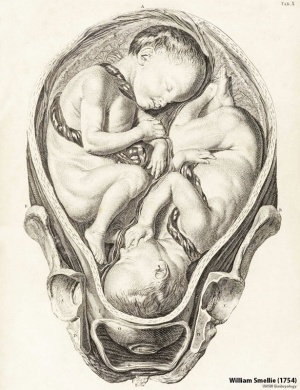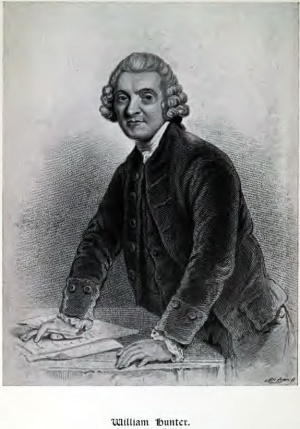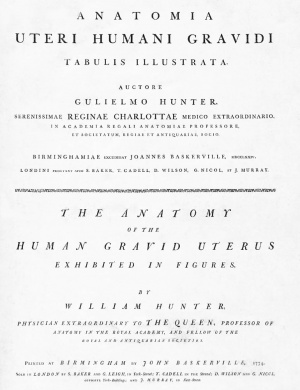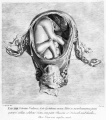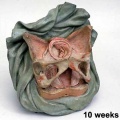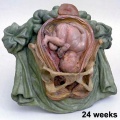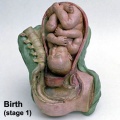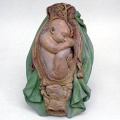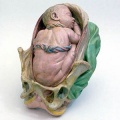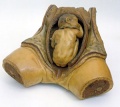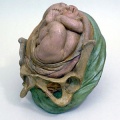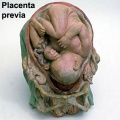Embryology History - 17th and 18th Century Anatomies
| Embryology - 27 Apr 2024 |
|---|
| Google Translate - select your language from the list shown below (this will open a new external page) |
|
العربية | català | 中文 | 中國傳統的 | français | Deutsche | עִברִית | हिंदी | bahasa Indonesia | italiano | 日本語 | 한국어 | မြန်မာ | Pilipino | Polskie | português | ਪੰਜਾਬੀ ਦੇ | Română | русский | Español | Swahili | Svensk | ไทย | Türkçe | اردو | ייִדיש | Tiếng Việt These external translations are automated and may not be accurate. (More? About Translations) |
Introduction
We have been studying human development for a very long time. This page is an introduction to historical references (Anatomies) in Embryology. Many of images are available as digital versions from the links to National Library of Medicine and other public sources.
| Historic Disclaimer - information about historic embryology pages |
|---|
| Pages where the terms "Historic" (textbooks, papers, people, recommendations) appear on this site, and sections within pages where this disclaimer appears, indicate that the content and scientific understanding are specific to the time of publication. This means that while some scientific descriptions are still accurate, the terminology and interpretation of the developmental mechanisms reflect the understanding at the time of original publication and those of the preceding periods, these terms, interpretations and recommendations may not reflect our current scientific understanding. (More? Embryology History | Historic Embryology Papers) |
Spiegel and Casseri
Spiegel A. and Casseri G. De formato foetu liber singularis. (1626) Padua: Io. Bap. de Martinis & Livius Pasquatus. NLM
Adriaan van den Spiegel (1578-1625) and Giulio Casseri (ca. 1552–1616).
Published posthumously by Spigelius' son-in-law, the physician Liberalis L. Crema of Padua.
Regnier de Graaf
Regnier de Graaf (1641 - 1673), a Dutch physician and anatomist. Doctoral thesis on the pancreas, identified the function of the ovarian follicle (named Graafian follicle), the final mature antral follicle released by ovulation.
De Graaf R. De virorum organis generationi inservientibus, de clysteribus et de usu siphonis in anatomia. Ex officina Hackiana, Lugd. Batav. et Roterod. 1668.
De Graaf R. De mulierum organis generationi inservientibus tractatus novus. Ex officina Hackiana, Lugd. Batav. 1672.
R. De Graaf. Alle de wercken, Abraham Abrahamse, Amsterdam (1686).
References
<pubmed>10825629</pubmed> <pubmed>10923067</pubmed> <pubmed>4607171</pubmed> <pubmed>1792221</pubmed> <pubmed>773713</pubmed> <pubmed>10730914</pubmed> <pubmed></pubmed> <pubmed></pubmed>
Paul Portal
Paul Portal: The Compleat Practice of Men and Women Midwives (1705)
"Paul Portal (1630-1703), French obstetrician, originally published this important treatise in Paris in 1696. It includes his demonstration of turning a fetus during childbirth using one foot and contains his teaching that face presentation runs a normal course during the labor process."
Historical Medical Digital Library: http://www.collphyphil.org/HMDLSubweb/Pages/P/PortalP/compramenPgAccess.htm
Govard Bidloo
Bidloo, Govard (1649 - 1713) Ontleding des menschelyken lichaams, Amsterdam: By de weduwe van Joannes van Someren, de erfgenaamen van Joannes van Dyk, Hendrik en de weduwe van Dirk Boom, 1690.
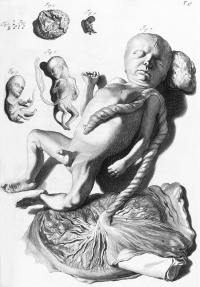
|
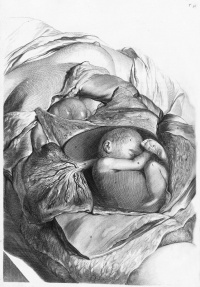
|
| Fetal Growth | Fetus and Uterus |
William Smellie
William Smellie (1697-1763) A sett of anatomical tables, with explanations, and an abridgment, of the practice of midwifery (1754) He also helped develop the delivery forceps which by the late eighteenth century were a well-known standard obstetrical instrument.
Table 10 showing a twin pregnancy, from A sett of anatomical tables, with explanations, and an abridgment, of the practice of midwifery (1754)
- Links: Set of Anatomical Tables | William Smellie
William Hunter
William Hunter (1718-1783) Anatomia uteri humani gravidi tabulis illustrata = The anatomy of the human gravid uterus exhibited in figures (1774)
- Links: William Hunter
Wilhelm Braune

|
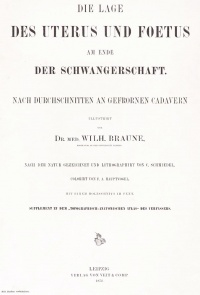
The Position of the Uterus and Fetus at Term (1872) (Die Lage des Uterus und Foetus am Ende der Schwangerschaft.) |
Braune, Wilhelm (1831-1892): Topographisch-anatomischer Atlas : nach Durchschnitten an gefrornen Cadavern, Leipzig: Verlag von Veit & Comp., 1867-1872. (Topographic-anatomical Atlas)
The Position of the Uterus and Fetus at Term (1872)
- Braune Image Links: Uterus and Fetus Position at Term | Section through Uterus and Fetus | Uterus without Fetus | Uterus and Fetus Position at Birth | Section through Uterus and Fetus at Birth | Uterus without Fetus at Birth | 17-18 C Anatomies
Giuseppe Galletti
Giuseppe Galletti (? - 1819) these models are available for viewing at the Institute and Museum of the History of Science (Italy) "Specimens of obstetric models: the wax models are life-sized; the terracotta versions are reduced to a 1:3 scale. Together with the anatomical waxes in the Specola Museum in Florence, these models are among the most significant examples of the use of artistic techniques for teaching medicine and obstetrics to midwives and surgery students in Florentine hospitals at the end of the eighteenth century."
- Links: Birth | IMSS Room XVIII. Surgery and obstetrics | IMSS - where we are | La Specola Museum (Italy)
External Links
External Links Notice - The dynamic nature of the internet may mean that some of these listed links may no longer function. If the link no longer works search the web with the link text or name. Links to any external commercial sites are provided for information purposes only and should never be considered an endorsement. UNSW Embryology is provided as an educational resource with no clinical information or commercial affiliation.
- National Library of medicine (USA) Historical Anatomies on the Web "Historical Anatomies on the Web is a digital project designed to give Internet users access to high quality images from important anatomical atlases in the Library's collection."
- Institute and Museum of the History of Science (Italy) Room XVIII. Surgery and obstetrics
- National Library of medicine (USA) History of Medicine
- National Museum of Health and Medicine (USA) History of Medicine
- National Museum of Health and Medicine (USA) Human Developmental Anatomy Center (HDAC) "Maintains the largest collection of embryologic material in the United States. The Center is a primary source for centralized research in developmental anatomy."
- Smithsonian Institution Whatever Happened to Polio? " This exhibition marks the fiftieth anniversary of the announcement that Dr. Jonas Salk had developed a vaccine to prevent polio, the most notorious disease of the 20th century until AIDS appeared."
- College of Physicians of Philadelphia Historical Medical Digital Library Copyright for the books in the Historical Medical Digital Library of the College of Physicians of Philadelphia is in the public domain.
Glossary Links
- Glossary: A | B | C | D | E | F | G | H | I | J | K | L | M | N | O | P | Q | R | S | T | U | V | W | X | Y | Z | Numbers | Symbols | Term Link
Cite this page: Hill, M.A. (2024, April 27) Embryology Embryology History - 17th and 18th Century Anatomies. Retrieved from https://embryology.med.unsw.edu.au/embryology/index.php/Embryology_History_-_17th_and_18th_Century_Anatomies
- © Dr Mark Hill 2024, UNSW Embryology ISBN: 978 0 7334 2609 4 - UNSW CRICOS Provider Code No. 00098G







